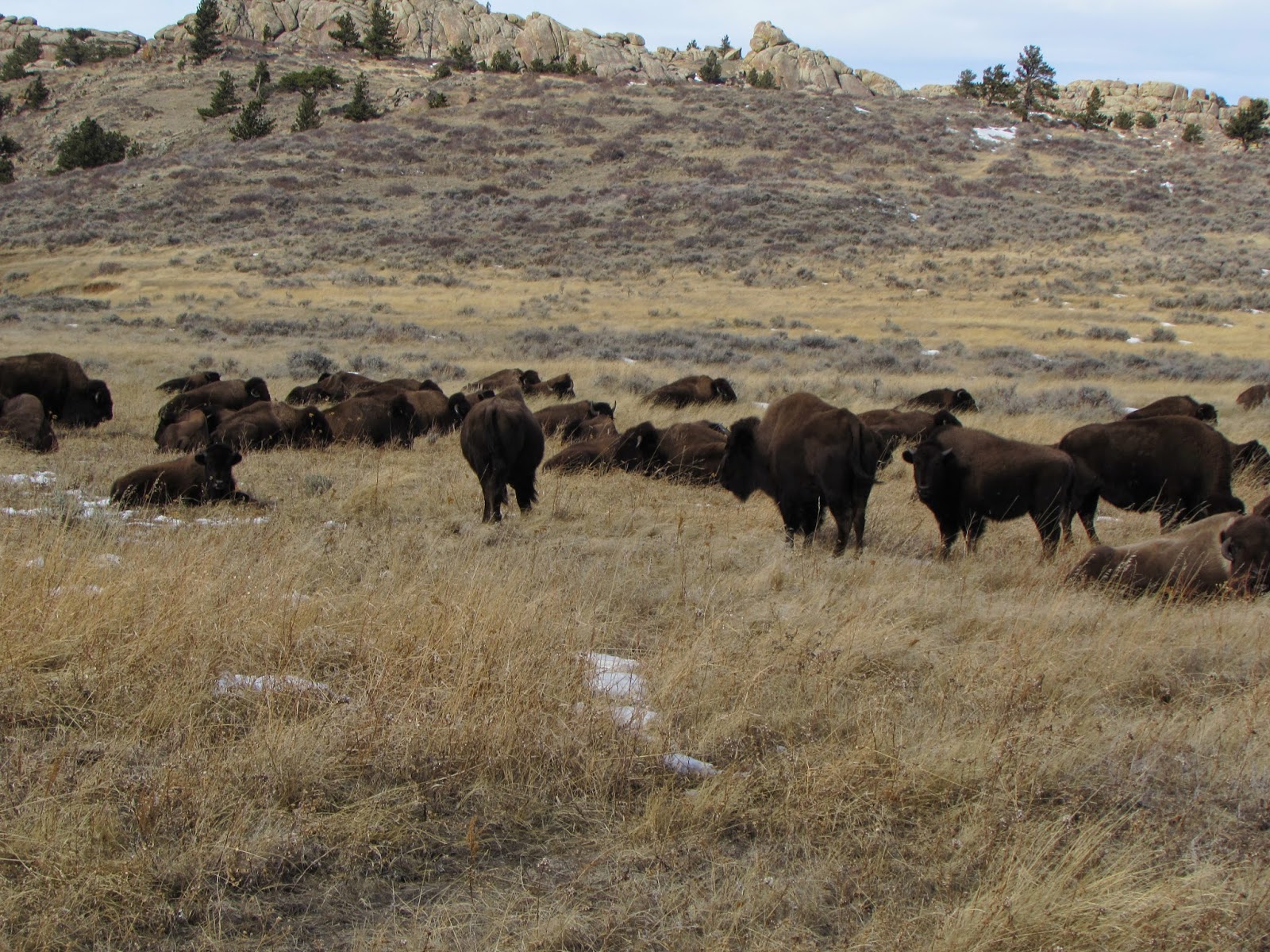The Legend of the Bouncing Buffalo
Long before the bow and arrow native peoples were hunting
bison for food. After the bow and arrow were perfected and commonly used for
hunting, nature and the lay of the land were still important for big annual
hunts, hunts needed to feed the people through long hard winters.
One of the most interesting legends of the hunt is set in
and around what today is the tiny village, (212 population in 2010 census) of Chugwater,
Wyoming.
 |
| Chugwater today |
~The Legend~
Long ago, long before the coming of the white man, the
valley of the cliffs, (Chugwater Valley), was the home of a powerful Mandan
chief. One day he was gored and trampled by a bull buffalo. He survived but
would not be able to hunt again that season. He ordered his son, the Dreamer,
to lead the next hunt.
The son, in one of his dreaming states at the time, only
grunted at the request and continued to dream. The old chief, disgusted with
his son, went through the tribe hoping to find a worthy son, a son he could
adopt and one that would lead the hunt. But the Dreamer had been listening when
his father spoke. The Dreamer had heard his father’s request and called for a
council of hunters where he told them of his new plan, a plan that came to him
in a dream. He told them to cut the nearby herd and stampede as many as they
could toward the bluffs and run them off. The plan worked and when the buffalo
tumbled off the cliffs their bodies struck the boulders and rocks below with a
chugging sound, such as chug, chug, chug.
From that time on Native Indians and the soon to come white
man called the nearby stream, “The water at the place where the buffalo chug.”
The name was later shortened to Chugwater.
Not part of the story but an interesting side note is that Francis
Parkman in his famous work, The Oregon
Trail, camped and spent time with the Sioux at Chugwater Creek and describes
it in his book.




.JPG)

















